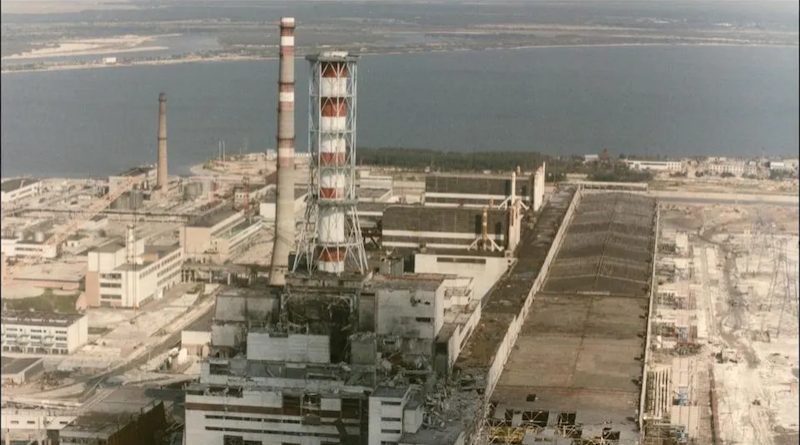Putin’s Threats To Zaporizhhia Nuclear Power Plant Endangers Energy Transition
By Ariel Cohen, alumnus of The Fletcher School, Senior Fellow at Atlantic Council
Carl Sagan once said, “The nuclear arms race is like two sworn enemies standing waist-deep in gasoline, one with three matches, the other with five.” The near-universal recognition of the futility of an all-out nuclear war led to widespread cuts in nuclear armaments since Gorbachev’s perestroika and the Soviet collapse in 1991. Even anti-communist hawks like former President Ronald Reaganpragmatically cut nuclear arms. The US and the USSR cut strategic arsenals from over 30,000 warheads each to approximately 1550 by 2011.
For decades, nuclear saber-rattling was mostly excised from “polite geopolitics” and confined to “eccentric” rouge states like North Korea, while the anti-status quo powers like Iran made an all-out effort to acquire nukes for regional domination and regime protection.
That was until Russia re-invaded Ukraine in February 2022, putting Ukraine’s massive nuclear energy sector, which generated 50 percent of the country’s electricity before the war, at risk.
Since the invasion, Russia has consistently threatened nuclear retaliation and escalated its rhetoric toward the West with nuclear threats as its conventional army flounders. According to Ukrainian officials, Russian troops dug trenches at, and spread radiation from, the infamous Chornobyl nuclear plant during their initial attack on Kyiv. They recklessly attackedthe Zaporizhzhia Nuclear Power Plant (ZNPP) in March 2022 even as technicians were livestreamed begging the Russians to stop endangering the safety of Europe by shooting at the plant.
Former Russian President Dimitry Medvedev repeatedly warned of a “nuclear apocalypse”, as Russia has stationed nuclear weapons in Belarus, and the Russian military consciously interdicted Ukrainian nuclear targets, first and foremost Zaporizhzhia, and threatened their capacity to operate safely. Now, Russia is courting disaster at the ZNPP during Ukraine’s counteroffensive.
This should not be viewed as merely “the boy who cried wolf.” There is a consistent pattern of Russian rhetoric and threats that warrants serious attention. Moscow endeavors to control threat escalation by accusing Ukraine of what Russia does. Before Russian provocations in the past, such as with the explosion of the Nova Kakhovka dam, Moscow claimed Ukraine would do that. Russia acted precisely as it accused its enemies.
Worryingly, Russian state media agency TASS proclaims Ukraine may attack the ZNPP with radioactive bombs, while evidence has emerged of Russian sabotage at the ZNPP, which the Kremlin denies. Ukraine has absolutely no incentive to irradiate its territory and isolate its vital allies amid a counter-offensive.
The situation at the ZNPP is grim. Not only is Putin playing Russian roulette with the apocalypse, but he could damage one of the greenest sources of energy necessary to decarbonize. Even if absolutely nothing goes wrong at the ZNPP and all the accusations are merely psyops, or if something minor occurs, consider for a moment the damage the Three Mile Island accident had in the United States on nuclear power, even though zero people were harmed. Chernobyl (1986) and the Fukushima-Daiichi accident in Japan (2011) changed the worldwide discourse on nuclear power (although Japan has re-embraced it).
At the November 2022 Dialogue of Continents, I joined top nuclear policy experts to discuss how to prevent this situation from arising in the first place. There are two primary ways to prevent a repeat of the ZNPP situation, technological and institutional.
Technologically, progress is already being made. Modern Small-Modular Reactors (SMRs) under development by companies like NuScale, TerraPower, and Korean Hydro and Nuclear Power (KHNP) are smaller, prefabricated, cheaper, and easier to maintain and move compared to their predecessors. Even traditional large-scale nuclear power plants using new materials such as new zirconium and carbon alloys under development by companies like Westinghouse and Bechtel are being constructed in Ukraine’s neighbors in Poland and Romania, which are more durable to even direct attacks. Western governments and investors should embrace the potential of this new technology and not allow ephemeral concerns to derail this potential.
Institutionally, multiple mechanisms can be employed to protect nuclear power plants. The wartime status of nuclear power plants is outlined in the Article 56 of the Protocol Additional (I) to Geneva Conventions. The Protocol text reads that a military may not attack a nuclear plant or any objects in its vicinity unless they provide “regular, significant and direct support of military operations and if such attack is the only feasible way to terminate such support.”
The Budapest Memorandum reinforces the Geneva Conventions Protocol Additional (I) and is specific to Ukraine. In the agreement, Ukraine gave up its Soviet-era nuclear weapons in exchange for protection under Russia’s nuclear umbrella and specific security guarantees for not just Ukrainian sovereignty (which Russia violated), but also for Ukrainian nuclear power generation.
The Geneva Convention and the Budapest Memorandum, in conjunction, create a legal basis for protecting the ZNPP. While the difficulty in enforcing international law is hardly unique to Russia and the ZNPP, nuclear industry powers, including the U.S., France, Korea, Japan, and yes, China, need to increase the application of available legal and sanctions tools against Russia and Russian state and quasi-state actors.
Russia is endangering civilian nuclear power for its short-term war goals in Ukraine, possibly in the hope that it can shut down any sources of power generation which might wean the West off its hydrocarbons in the long term. It may even accomplish this without a significant nuclear accident if the past events are any precedent. In the process, it will shoot its own nuclear behemoth, Rosatom, in the head.
One can only hope that Russia’s actions are unlikely to deter China’s nuclear power push or totally derail nuclear power worldwide. The West must embrace new nuclear technologies and enforce international institutional safeguards and tools to prevent the ZNPP crisis from happening, not abandon our cleanest and most efficient energy source. In an age of drones and asymmetrical warfare, we should prioritize nuclear safety but also remember that blackmail should never be rewarded.
(This post is republished from Forbes.)

